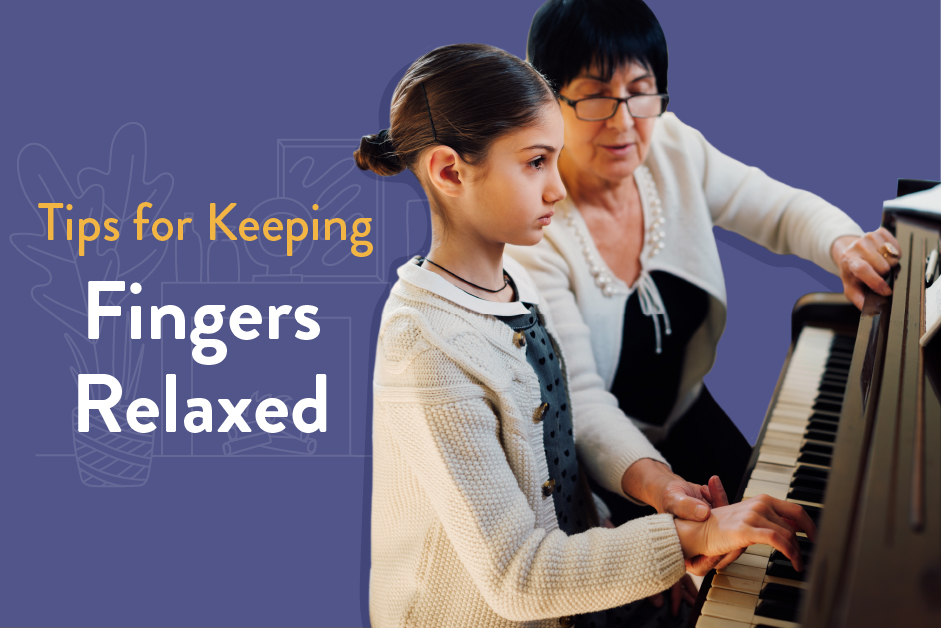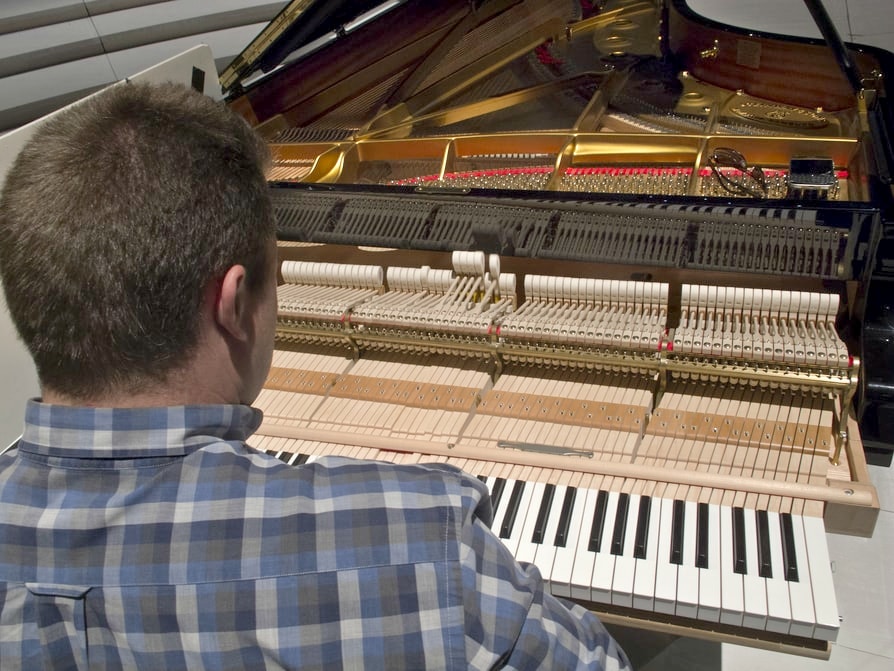Yes, you can play a piano after moving it, but it may require tuning. Immediate performance might not reflect its best sound quality.
Transferring a piano can be a tumultuous experience for the instrument, not just physically, but acoustically. It goes beyond merely transporting an object from point A to B; it’s about handling a delicate musical partner that’s susceptible to changes in its environment.
Most pianos are resilient beasts, but they are also finely tuned machines, with over 200 strings under tensions that can alter with shifts in position and environment. Post-move, tuning stabilizes the instrument, ensuring melodious renditions are on the horizon. An untuned piano might suffice for a casual playthrough, but for an optimal experience, patience and a tuning appointment go a long way. Remember, like any precision instrument, your piano deserves care – especially after a move.

Credit: www.facebook.com
Challenges Of Moving A Piano
Moving a piano is no small task. This large, delicate instrument requires careful handling. In order to ensure your piano remains in top condition, you must understand the challenges involved. We’ll dive into the potential risks and tuning stability concerns that arise when moving a piano.
Potential Risks To Instrument Integrity
Moving a piano poses several risks to its structural integrity. These risks include:
- Physical damage: Scratches, dents, or broken components can occur.
- Internal harm: The delicate internal mechanics may suffer from shock or vibration.
- Environmental stress: Sudden changes in temperature and humidity affect the wood.
Ensuring your piano is handled by professionals with the right tools is critical. Special padding, dollies, and ramps help minimize these risks.
Tuning Stability Concerns
Moving a piano can affect how well it holds a tune. Factors that impact tuning stability include:
| Movement | Effects on Tuning |
|---|---|
| Jostling during transport | Strings may lose tension, altering sound. |
| Rotating or flipping the piano | Potential misalignment of internal parts. |
| Environmental change | Wood expansion or contraction affects pitch. |
After relocating, let the piano acclimate before tuning. Experts suggest waiting several weeks. This wait allows the piano to adjust to its new environment. Only then should you seek a professional tuner to restore your piano’s harmonious sound.

Credit: www.hoffmanacademy.com
Initial Steps After Relocation
You’ve carefully moved your piano to its new home. Can you play it right away? Not so fast! Your piano needs some care first. Let’s explore the beginning steps to ensure your instrument is safe and sound after the move.
Inspecting For External Damage
A piano is not just an instrument but a delicate work of art. Examining it for any visible harm is crucial.
- Check the legs and casters. Are they secure?
- Inspect the keys for any misalignment or stickiness.
- Look over the piano’s surface for scratches or dents.
- Ensure the lid opens and closes smoothly.
Spot any issues? Jot them down. You might need a professional’s help.
Allowing For Acclimatization
Pianos are sensitive to their environment. Giving your piano time to adjust is vital.
- Place the piano away from direct sunlight, drafts, and vents.
- Give it a few weeks to get used to the new humidity and temperature.
Tuning your piano too soon can be a waste. Wait until the acclimatization period is over. Then, it’s time for a tune-up!
Ensuring Tuning Retention
Moving a piano can unsettle its delicate inner workings. This can affect its sound. It’s vital to understand the importance of tuning after relocation. For those eager to play their instrument post-move, this means ensuring the retention of the piano’s tuneful melody. Below, we delve into steps for tuning stability post-move.
The Role Of A Professional Tuner
Ensuring optimum performance from your piano requires a professional’s touch. Piano tuners assess the piano’s condition. They make precise adjustments to each string. Their expertise guarantees the best sound quality.
- Check tuning stability
- Identify possible pitch adjustments
- Adjust tension for each string
Time Frame For Retuning
Patience is key after relocating a piano. The instrument must acclimate to its new environment. Typically, a two to three weeks wait is ideal before tuning. This allows the wood and strings to settle.
After this period, schedule a tuning session. Regular maintenance follows every six months to ensure your piano remains in perfect pitch.
| Post-Move Timeline | Retuning Schedule |
|---|---|
| Initial Retuning | 2-3 Weeks |
| Regular Maintenance | Every 6 Months |
Playing Post-move
Once your piano has found its new spot in your home, there’s a certain excitement to start playing. Moving a piano can be a delicate task, and whether you’re an eager beginner or a seasoned pianist, you might wonder about playing your instrument post-move. Let’s delve into what you should consider before letting your fingers dance on the keys again.
Immediate Playing: Yes Or No?
Can you tickle the ivories right after the move? The short answer: Yes, but with caution. A piano is resilient and playing it immediately won’t cause harm. But, remember that the instrument might be out of tune. The internal mechanics, like strings and hammers, need to settle. If you can’t resist, go ahead and play, but keep it light and avoid a rigorous practice session right off the bat.
Easing Into Regular Practice
After your piano’s journey, it’s important to give it time. Here’s a simple guide to ease back into your musical flow:
- First Week: Short, gentle play to allow the piano to adjust.
- Second Week: Slowly increase playing time as the piano acclimates.
- Tune Time: Schedule a tuning to ensure your piano sounds its best.
Gentle play in the initial days is crucial. This approach protects the integrity of your piano. With these steps, your beloved instrument will be ready for regular practice and your creative explorations.
Long-term Piano Care
After moving a piano, it’s crucial to think about long-term care. This musical treasure needs regular attention. Just like a garden requires watering and sunlight, your piano demands maintenance. Follow these steps to keep your piano in concert-ready condition.
Routine Maintenance Tips
Staying on top of piano care ensures lasting performance. Begin with these simple yet effective steps:
- Tune regularly: Experts recommend tuning twice a year.
- Clean carefully: Use a soft cloth to wipe down keys and surfaces.
- Play often: Regular use helps keep mechanisms in good working order.
Professional check-ups are like annual doctor visits for your piano. They catch issues before they turn serious.
Monitoring Environmental Changes
Just as we wear coats in winter, pianos need protection from the environment. Avoid placing your piano near windows where sunlight can cause damage. Humidity control is also vital:
| Winter | Humidity drops | Use humidifiers to prevent wood from cracking. |
| Summer | Humidity rises | Dehumidifiers keep moisture levels in check. |
The right temperature and humidity levels keep a piano stable and sound beautiful. These long-term care strategies ensure your piano continues to produce enchanting melodies for years to come.

Credit: wcmovingandstorage.com
Is it Possible to Play a Left-Handed Piano After Moving It?
Yes, it is possible to play a left handed piano after moving it. Some pianos offer a left handed piano option, which involves rearranging the keys and pedals to accommodate left-handed players. This allows left-handed individuals to play the piano comfortably without any hindrance.
Frequently Asked Questions For Can You Play A Piano After Moving It
How Long Should You Wait To Play A Piano After Moving?
Allow an upright piano to sit for at least 24 hours after moving. For grand pianos, a 48-hour settling period is recommended. This waiting time helps the instrument acclimate to the new environment’s temperature and humidity levels.
What Happens To A Piano When It Is Moved?
When a piano is moved, it may require tuning due to shifts in its internal mechanics and strings from jostling or changes in humidity and temperature.
Does Moving A Piano Put It Out Of Tune?
Yes, moving a piano can put it out of tune. Delicate internal mechanisms can shift during transport, affecting the instrument’s sound quality. Regular tuning is recommended after a move.
What Should You Not Do When Moving A Piano?
Do not attempt moving a piano alone; avoid using makeshift dollies; don’t lift by the legs; skip securing straps; and never drag it across the floor.
Conclusion
Transporting a piano can indeed pose a challenge, yet it doesn’t mean an end to your musical enjoyment. Once settled in its new location, your piano may require some tuning, but rest assured, your ability to play will remain intact.
Embrace the move as a fresh start for both you and your beloved instrument!
